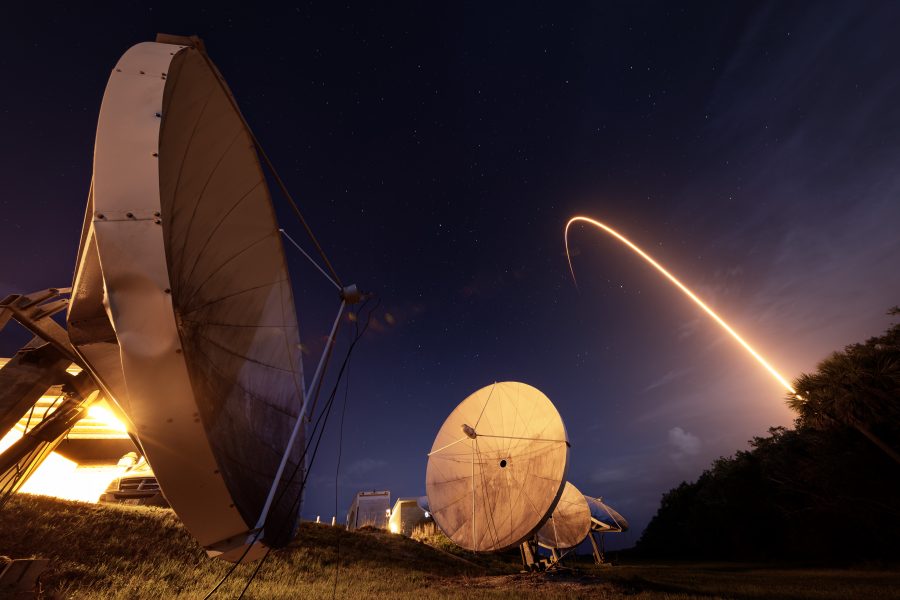NATIONAL HARBOR, Md.—The Space Force is running out of room at its launch ranges in Florida and California and is looking to expand its government and commercial spaceport partnerships to accommodate growing launch demand.
The service’s ranges at Cape Canaveral Space Force Station, Fla., and Vandenberg Space Force Base, Calif., are among the busiest spaceports in the world. Annual launch rates at the two hubs have spiked from fewer than 20 missions in 2020 to a projected 220 this year. That demand is driven largely by the commercial market, but as the service shifts toward more proliferation, its spacelift needs are also growing.
To ease the strain at Vandenberg and the Cape, the Space Force is exploring partnerships with spaceports in other states, Lt. Gen. Phillip Garrant, head of Space Systems Command, told reporters during AFA’s Air, Space, and Cyber Conference.
The goal, he said, would be to prioritize flying heavy and super heavy rockets out of Cape Canaveral and Vandenberg and then look for other locations that have the capacity to support smaller vehicles.
“We know there are only a few places we can do our biggest launches from,” Garrant said in a Sept. 24 briefing. “That’s probably not going to change. So, where can we leverage other locations that have good orbital presence?”
Texas and Virginia are two options USSF is considering, Garrant said. Texas state leaders have been “very aggressive” in wanting to expand launch access beyond SpaceX’s Starbase site in Boca Chica, Garrant said. In Virginia, NASA’s Wallops Flight Facility supports a number of small launch companies and is growing to support larger vehicles like Rocket Lab’s Neutron.
At a ribbon-cutting in late August for Rocket Lab’s expanded Wallops footprint, Virginia Gov. Glenn Youngkin said the state wants the launch facility to be “the most vibrant space industry complex in America” for both military and commercial spaceflight.
The Space Force hasn’t finalized any plans to shift launches to these other spaceports, and Garrant said moving forward would require significant environmental considerations, financial resources, and construction. He said those factors put any solid decisions about branching out to new launch locations on a “mid-term” time horizon.
Asked whether USSF is seriously considering international launch sites as part of this discussion, Garrant said there isn’t a concerted effort right now, but the service is open to the possibility.
“From a U.S. perspective, we do have some policy issues that we would have to work through, but we do have some partners . . . in Europe, we’ve got partners in Australia and New Zealand,” Garrant said. “We would absolutely look at those opportunities.”
Other potential partners include Japan, France, Norway, the United Kingdom, and Sweden—all of which have or are building launch capabilities. Brig. Gen. Kristin Panzenhagen said during a Mitchell Institute event in May that those newer sites could be designed with interoperability in mind, which would make it easier for international allies to take advantage of the capacity.
“We’re at the very early stages of that, but I’m really excited about building those international partnerships,” she said.
Sea-based launch is another option the service is studying. Last year, the Pentagon’s Defense Innovation Unit awarded a contract to The Spaceport Company, which builds floating launch pads, to demonstrate how the military could use its capability to ease range congestion.
The approach poses logistical challenges—including how to transport a rocket or other launch commodities to a barge—and the jury is still out on whether these firms can close their business case, but Panzenhagen said it’s an area USSF is watching closely.


